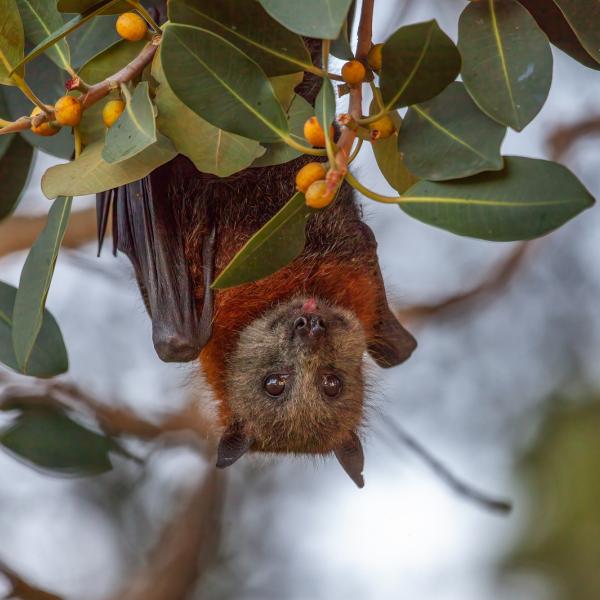Protecting Maitland's Wildlife
Our local wildlife plays a crucial role in maintaining the balance and health of our ecosystems. From the vibrant bird species to the diverse native mammals and insects, each contributes to the beauty and functionality of our environment.
Strategic targets we are meeting
Creating biodiversity corridors
This is helping us achieve Goal 1.1 of our Green & Blue Maitland target.
Protect important natural spaces
This is helping us achieve Goal 1.2 of our Green & Blue Maitland target.
Creating community engagement
This is helping us achieve Goal 1.4 of our Green & Blue Maitland target.
Wildlife at home
Birds
Australia has lost 29 bird species to extinction in the past 200 years, with around 150 species currently threatened nationwide. Events like the Backyard Bird Count help monitor these species. In Maitland, 11 threatened species were spotted in 2021 and 7 in 2022.
Backyard bird survey
Providing an opportunity for everyone - from school children, senior citizens, families and community groups - to become citizen scientists for one week every October.
Flying foxes
As a protected species, flying foxes should be left undisturbed to avoid stress, they are quietest when left undisturbed.
State and Federal government agencies are responsible for regulating and protecting flying foxes and can offer the best advice on coexisting with them in urban settings. For more information, refer to the NSW Government’s Fact Sheet, learn about how to manage flying foxes or contact the Department of Planning, Industry and Environment on 131 555.
Injured or sick flying fox
If you come across a flying fox, whether healthy, injured, or deceased, do not handle it. Handling them can pose health risks, including disease from scratches or bites.
If you find a wounded or deceased flying fox, contact wildlife rescue service.
Turtles
Australia is home to 23 freshwater turtle species, seven of which are found in New South Wales. Due to predators, human activity and drought, freshwater turtles face many threats to their survival.
Help protect our turtles
We are working with conservation program 1 Million Turtles & TurtleSAT to learn more about our local turtle populations. You can help by mapping turtle sightings at Walka Water Works, Earthcare Park and other Maitland locations. Your efforts will support research into turtle habitats, movements and threats.
Snakes
Remember it is an offence to harm snakes under the Biodiversity Conservation Act 2016.
If you find a snake within a Council operated community building or public playground, please contact us to let us know.
Council cannot respond to requests to remove snakes from private land or areas of natural habitat on public land such as areas of bushland, wetlands and waterways.
If you spot a snake at home, follow these steps to keep your family and pets safe:
- Move everyone, including pets, away from the area immediately.
- Do not approach, move or attempt kill the snake, as this increases your risk of being bitten.
- Watch from a safe distance to see if the snake leaves on its own.
- If the snake is aggressive or poses a threat, contact a licensed snake handler for safe removal.
Mosquitoes
To manage mosquito risks effectively, download the NSW Health Hazard Fact Sheet for essential tips on clothing, repellent use, and preventing mosquito breeding around your home.


